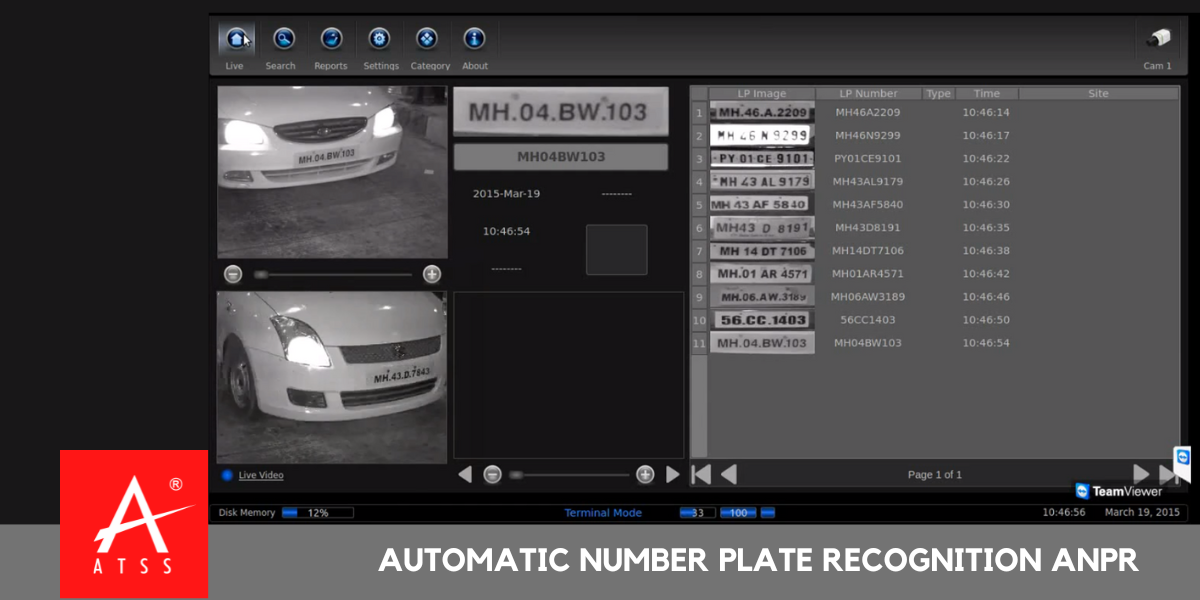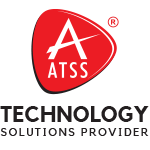
ANPR Cctv Camera
Automatic Number Plate Recognition
ANPR Cctv Camera – Eliminates human intervention in the building entrances and the paperless feature is being managed. It’s an efficient way of managing the In/Out records for the Vehicles with 100% Accuracy.
- Real-Time Detection.
- 24/7 Surveillance Protection
- Multiple-Module Integration
- Incorporating Multiple Entry Points
- Lean/Peak Time Analysis
- Frequency of Visits
- Electronic Tracking System
- Faster Report Generation
- Instant Results During Investigations
- Black/White Listed Checks
- Overstayed Parking Alert
- SMS/Email/Notifications
- Stolen Vehicle Checks
ANPR Cctv Camera technology uses optical character recognition on images to read vehicle registration plates. It can use existing closed-circuit television, road-rule enforcement cameras, or cameras specifically designed for the task. ANPR is used by police forces around the world for law enforcement purposes, including checking if a vehicle is registered or licensed. It is also used for electronic toll collection on pay-per-use roads and as a method of making a systematic list of the movements of traffic, for example by highway agencies, shopping malls, commercial complexes, and residential apartments.
Automatic number plate recognition can be used to store the images captured by the cameras as well as the text from the license plate, with some configurable to store a photograph of the driver. Systems commonly use infrared lighting to allow the camera to take a picture at any time of day or night. ANPR technology must take into account plate variations from place to place.
ANPR is sometimes known by various other terms:
- Automatic (or automated) license-plate recognition (ALPR)
- Automatic (or automated) license-plate reader (ALPR)
- Automatic vehicle identification (AVI)
- Car-plate recognition (CPR)
- License-plate recognition (LPR)
- Mobile license-plate reader (MLPR)
- Vehicle license-plate recognition (VLPR)
- Vehicle recognition identification (VRI)
Development
ANPR was invented in 1976 at the Police Scientific Development Branch in the UK.[citation needed] Prototype systems were working by 1979, and contracts were awarded to produce industrial systems, first at EMI Electronics, and then at Computer Recognition Systems (CRS) in Wokingham, UK. Early trial systems were deployed on the A1 road and at the Dartford Tunnel. The first arrest through the detection of a stolen car was made in 1981. However, ANPR did not become widely used until new developments in cheaper and easier-to-use software were pioneered during the 1990s. The collection of ANPR data for future use (i.e., in solving then-unidentified crimes) was documented in the early 2000s. The first documented case of ANPR being used to help solve a murder occurred in November 2005, in Bradford, UK, where ANPR played a vital role in locating and subsequently convicting the killers of Sharon Beshenivsky.
Components
The software aspect of the system runs on standard home computer hardware and can be linked to other applications or databases. It first uses a series of image manipulation techniques to detect, normalize and enhance the image of the number plate, and then optical character recognition (OCR) to extract the alphanumerics of the license plate. ANPR systems are generally deployed in one of two basic approaches: one allows for the entire process to be performed at the lane location in real-time, and the other transmits all the images from many lanes to a remote computer location and performs the OCR process there at some later point in time. When done at the lane site, the information captured of the plate alphanumeric, date-time, lane identification, and any other information required is completed in approximately 250 milliseconds. This information can easily be transmitted to a remote computer for further processing if necessary or stored at the lane for later retrieval. In the other arrangement, there are typically large numbers of PCs used in a server farm to handle high workloads, such as those found in the London congestion charge project. Often in such systems, there is a requirement to forward images to the remote server, and this can require larger bandwidth transmission media.
Technology
The font on Dutch plates was changed to improve plate recognition.
ANPR Cctv camera uses optical character recognition (OCR) on images taken by cameras. When Dutch vehicle registration plates switched to a different style in 2002, one of the changes made was to the font, introducing small gaps in some letters (such as P and R) to make them more distinct and therefore more legible to such systems. Some license plate arrangements use variations in font sizes and positioning—ANPR systems must be able to cope with such differences in order to be truly effective. More complicated systems can cope with international variants, though many programs are individually tailored to each country.
The cameras used can be existing road-rule enforcement or closed-circuit television cameras, as well as mobile units, which are usually attached to vehicles. Some systems use infrared cameras to take a clearer image of the plates.
Algorithms
There are seven primary algorithms that the software requires for identifying a license plate:
- Plate localization – responsible for finding and isolating the plate on the picture.
- Plate orientation and sizing – compensates for the skew of the plate and adjusts the dimensions to the required size.
- Normalization – adjusts the brightness and contrast of the image.
- Character segmentation – finds the individual characters on the plates.
- Optical character recognition.
- Syntactical/Geometrical analysis – check characters and positions against country-specific rules.
- The averaging of the recognized value over multiple fields/images to produce a more reliable or confident result.
- Especially since any single image may contain a reflected light flare, be partially obscured, or have another temporary effect.
The complexity of each of these subsections of the program determines the accuracy of the system. During the third phase (normalization), some systems use edge detection techniques to increase the picture difference between the letters and the plate backing. A median filter may also be used to reduce the visual noise on the image.
Difficulties
There are a number of possible difficulties that the software must be able to cope with. These include:
- Poor file resolution, usually because the plate is too far away but sometimes resulting from the use of a low-quality camera.
- Blurry images, particularly motion blur.
- Poor lighting and low contrast due to overexposure, reflection, or shadows.
- An object obscuring (part of) the plate, quite often a tow bar, or dirt on the plate.
- Read license plates that are different at the front and the back because of towed trailers, campers, etc.
- Vehicle lane change in the camera’s angle of view during license plate reading.
- A different font is popular for vanity plates (some countries do not allow such plates, eliminating the problem).
- Circumvention techniques.
- Lack of coordination between countries or states. Two cars from different countries or states can have the same number but different designs of the plate.
While some of these problems can be corrected within the software, it is primarily left to the hardware side of the system to work out solutions to these difficulties. Increasing the height of the camera may avoid problems with objects (such as other vehicles) obscuring the plate but introduces and increases other problems, such as adjusting for the increased skew of the plate.
On some cars, tow bars may obscure one or two characters on the license plate. Bikes on bike racks can also obscure the number plate, though in some countries and jurisdictions, such as Victoria, Australia, “bike plates” are supposed to be fitted. Some small-scale systems allow for some errors in the license plate. When used for giving specific vehicles access to a barricaded area, the decision may be made to have an acceptable error rate of one character. This is because the likelihood of an unauthorized car having such a similar license plate is seen as quite small. However, this level of inaccuracy would not be acceptable in most applications of an ANPR Cctv camera system.
Imaging Hardware
At the front end of any Anpr Cctv Camera system is the imaging hardware that captures the image of the license plates. The initial image capture forms a critically important part of the ANPR system which, in accordance with the garbage in, garbage out principle of computing, will often determine the overall performance.
License plate capture is typically performed by specialized cameras designed specifically for the task, although new[when?] software techniques are being implemented that support any I.P.-based surveillance camera and increase the utility of ANPR for perimeter security applications. Factors that pose difficulty for license plate imaging cameras include the speed of the vehicles being recorded, a varying level of ambient light, headlight glare, and harsh environmental conditions. Most dedicated license plate capture cameras will incorporate infrared illumination in order to solve the problems of lighting and plate reflectivity.
Portable traffic enforcement system used by the Hungarian police. The rows of infrared LEDs are visible on the right.
Many countries now use license plates that are retroreflective. This returns the light back to the source and thus improves the contrast of the image. In some countries, the characters on the plate are not reflective, giving a high level of contrast with the reflective background in any lighting conditions. A camera that makes use of active infrared imaging (with a normal color filter over the lens and an infrared illuminator next to it) benefits greatly from this as the infrared waves are reflected back from the plate. This is only possible on dedicated ANPR Cctv camera, however, and so cameras used for other purposes must rely more heavily on the software capabilities. Further, when a full-color image is required as well as the use of the ANPR-retrieved details, it is necessary to have one infrared-enabled camera and one normal (color) camera working together.
To avoid blurring it is ideal to have the shutter speed of a dedicated camera set to 1/1000 of a second. It is also important that the camera uses a global shutter, as opposed to a rolling shutter, to assure that the taken images are distortion-free. Because the car is moving, slower shutter speeds could result in an image that is too blurred to read using the OCR software, especially if the camera is much higher up than the vehicle. In slow-moving traffic, or when the camera is at a lower level and the vehicle is at an angle approaching the camera, the shutter speed does not need to be so fast. Shutter speeds of 1/500 of a second can cope with traffic moving up to 40 mph (64 km/h) and 1/250 of a second up to 5 mph (8 km/h). License plate capture cameras can produce usable images from vehicles traveling at 120 mph (190 km/h).
To maximize the chances of effective license plate capture, installers should carefully consider the positioning of the camera relative to the target capture area. Exceeding threshold angles of incidence between the camera lens and license plate will greatly reduce the probability of obtaining usable images due to distortion. Manufacturers have developed tools to help eliminate errors from the physical installation of license plate capture cameras.
Install our ANPR device today and feel safe and secure on your premises for the Future.
Dahua Video Management System VMS

